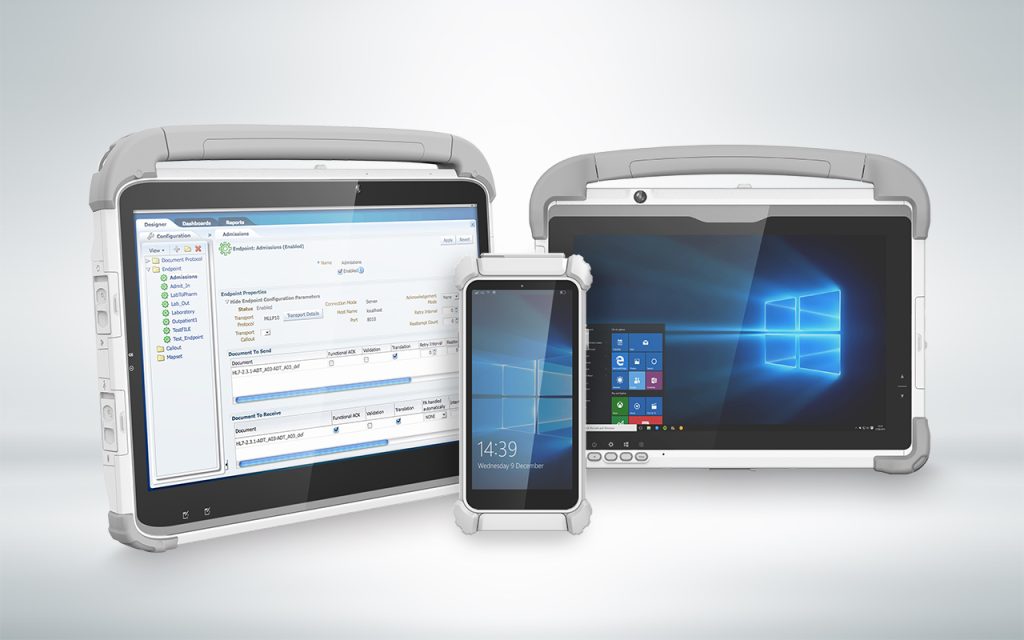
The landscape of defense medical logistics is undergoing a significant transformation driven by the ongoing technical refresh of the Defense Medical Logistics Standard Support (DMLSS). This initiative aims to optimize the performance of the Defense Health Agency (DHA) medical logistics (MEDLOG), providing best-value services and incorporating innovative data management technologies and industry best practices.
This blog explores the architecture, data transactions model, and prototype development for a highly scalable, integrated, and just-in-time defense medical logistics enterprise. It also delves into supply chain and logistics best practices, future trends, and emerging technologies poised to reshape the sector.
The Role of Medical Tablets in Modern MEDLOG
Medical tablets have become indispensable tools in modern MEDLOG operations. These devices enable healthcare professionals to access real-time data, streamline workflows, and improve communication within medical logistics chains. The integration of medical tablets into MEDLOG systems facilitates:
- Real-time Data Access: Allowing instant access to critical medical and logistical information.
- Enhanced Mobility: Enabling medical personnel to manage logistics from anywhere within the operational theater.
- Improved Accuracy: Reducing errors by digitizing data entry and retrieval processes.
Architecture of a Scalable MEDLOG System
A highly scalable and integrated MEDLOG system requires a robust architecture capable of handling large volumes of data and complex logistics operations. Key components include:
Data Warehouse
A centralized repository for all logistics data, enabling efficient data retrieval and analysis. This component ensures that all data is stored in a structured and accessible manner, facilitating real-time updates and historical data analysis.
Data Analytics Engine
Advanced analytics tools are essential for processing and interpreting data. These tools provide actionable insights that help in decision-making and optimizing logistics operations. They enable predictive analytics, trend analysis, and performance monitoring.
User Interface
An intuitive user interface, often accessed via medical tablets, is crucial for stakeholders to easily interact with the system. Dashboards, reporting tools, and visualization capabilities enhance the user experience, making it easier to access and understand logistics data.
Data Transactions Model
The data transactions model ensures the smooth flow of information across the MEDLOG system. Essential features include:
- Real-time Updates: Ensuring all data is current and accurate.
- Secure Transactions: Protecting sensitive information with robust encryption and authentication measures.
- Interoperability: Allowing seamless data exchange between different systems and platforms.
This model supports efficient data synchronization, minimizing delays and ensuring that all stakeholders have access to up-to-date information.
Prototype Development
Developing a prototype for a next-generation MEDLOG system involves several critical steps
- Identifying Requirements: Understanding the specific needs and challenges of defense medical logistics.
- System Design: Creating a blueprint that addresses these requirements, focusing on scalability, integration, and real-time capabilities.
- Testing and Iteration: Building and refining the prototype through rigorous testing and feedback loops to ensure functionality and performance.
Best Practices in Supply Chain and Logistics
To achieve industry best practices (IBP), defense medical logistics must incorporate progressive practices and emerging trends:
End-to-End Visibility
Ensuring all stages of the supply chain are visible and trackable enhances transparency and accountability. This visibility is crucial for managing inventory, monitoring shipments, and ensuring timely delivery of medical supplies.
Predictive Analytics
Utilizing data analytics to anticipate and mitigate potential disruptions is essential for maintaining a resilient supply chain. Predictive analytics can forecast demand, identify potential bottlenecks, and optimize inventory levels
Automation
Implementing automated systems for inventory management, order processing, and other logistics functions reduces manual errors and improves efficiency. Automation also enables real-time tracking and management of medical supplies.
Future Trends and Emerging Technologies
The future of defense medical logistics will be shaped by several key trends and emerging technologies:
Blockchain
Blockchain technology provides a secure and transparent way to track medical supplies and transactions. It ensures the integrity of data and enhances traceability, making it easier to manage inventory and verify the authenticity of medical products.
Artificial Intelligence (AI)
AI enhances decision-making through advanced data analysis and predictive modeling. AI algorithms can identify patterns, predict outcomes, and recommend optimal actions, improving the efficiency and effectiveness of logistics operations.
Internet of Things (IoT)
IoT connects devices and systems for real-time monitoring and management of medical supplies. IoT sensors can track environmental conditions, monitor the status of shipments, and provide real-time alerts, ensuring the quality and safety of medical products.
The ongoing technical refresh of the Defense Medical Logistics Standard Support is a pivotal initiative for optimizing the performance and capabilities of DHA medical logistics. By integrating medical tablets, innovative data management technologies, and industry best practices, MEDLOG can achieve a highly scalable, integrated, and just-in-time logistics enterprise. This transformation will enhance supply chain efficiency, improve visibility and tracking, and ultimately contribute to positive patient outcomes in next-generation theater and operational medicine.

